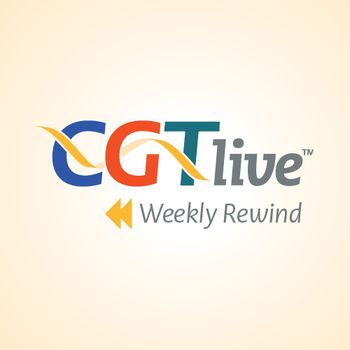
Eugenio Galli, MD, PhD, on Reexamining Frailty as a Barrier to CAR-T Treatment
The hematologist at the Hematology and Stem Cell Transplants Unit of Fondazione Policlinico Universitario A. Gemelli IRCCS in Rome discussed a study on the effect of comorbidities in patients receiving CAR-T.
Currently, patients with certain preexisting comorbidities may be ineligible for chimeric antigen receptor T-cell (CAR-T) treatment because it is believed they may be too frail to receive the treatment safely. Although, available data on this topic is limited.
At
CGTLive: Can you give some background context about your EHA presentation?
Eugenio Galli, MD, PhD: Our study focused on assessing whether baseline comorbidities influence the safety and nonrelapse mortality (NRM) of CD19-directed CAR-T therapy in patients with large B-cell lymphoma (LBCL). While tools like CAR-HEMATOTOX and mEASIX are widely used to predict acute toxicity, the role of preexisting comorbidities—especially in real-world populations—has remained largely underexplored. Given how frailty can be a barrier to CAR-T access, our goal was to determine if such concerns are justified.
What are some of the key findings you presented at EHA this year?
We analyzed 379 patients treated at 2 European CAR-T centers and found that 7–34% could be considered at “high” comorbidity burden according to various comorbidity scores (CIRS, HCT-CI, Severe4). Despite this, frailty did not increase the risk of severe toxicities like cytokine release syndrome, or immune effector cell–associated hematotoxicity (the impact of comorbidities on immune effector cell-associated neurotoxicity syndrome still needs some evidence), nor did it affect the need for ICU admission, tocilizumab, or steroids. Most importantly, comorbidity burden had no impact on NRM, even in older patients.
How would you summarize the big-picture implications that doctors and the broader healthcare community should take away from these results?
Frailty, as measured by traditional comorbidity indices, should not automatically exclude patients from CAR-T therapy. Our findings suggest that many so-called "frail" patients can safely receive CAR-T without excess risk of NRM. This could help broaden access, especially for older patients or those with chronic conditions, and shift eligibility assessments away from rigid exclusion criteria toward a more nuanced, individualized evaluation. The most important goal should be, instead, reducing tumor burden and tumor-related inflammation, as we highlighted that endothelial stress and hematological impairment—both largely related to the pathological inflammatory status—provide the higher risk for NRM.
What are the next steps for this research? Are there any challenges that still need to be addressed?
Longer follow-up is needed to better understand the long-term effects of frailty on outcomes like secondary malignancies or late organ toxicities, together with analyzing the impact of single comorbidities on specific toxicities. Additionally, current comorbidity scores weren’t designed specifically for cell therapy, so one challenge is to refine or validate more CAR-T–specific frailty tools that integrate clinical, biological, and functional parameters.
Is there anything not covered by the previous questions that you want to share?
Yes—this study reinforces the idea that functional fitness and inflammatory risk profiles may be more predictive of CAR-T safety than age or comorbidity burden alone. As more real-world data accumulate, we need to challenge outdated assumptions and make sure that potentially curative therapies like CAR-T are not withheld unnecessarily due to an oversimplified or first-look risk stratification.
This transcript has been edited for clarity.
REFERENCE
1. Galli E. Frail is not fail: comorbidities do not affect non-relapse mortality and safety in patients with LBCL treated with CAR-T therapy. Presented at: EHA 2025 Congress, June 12-15, virtual and in Milan, Italy. Abstract #S241
Newsletter
Stay at the forefront of cutting-edge science with CGT—your direct line to expert insights, breakthrough data, and real-time coverage of the latest advancements in cell and gene therapy.











































